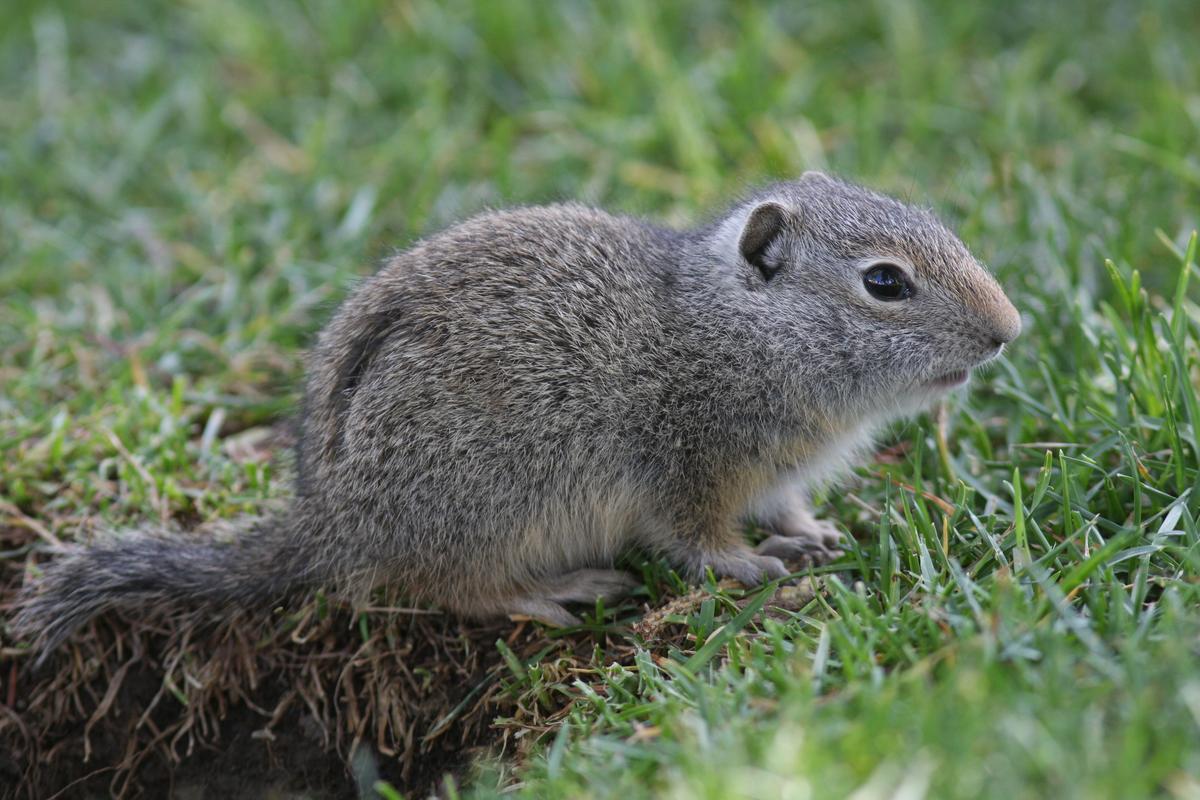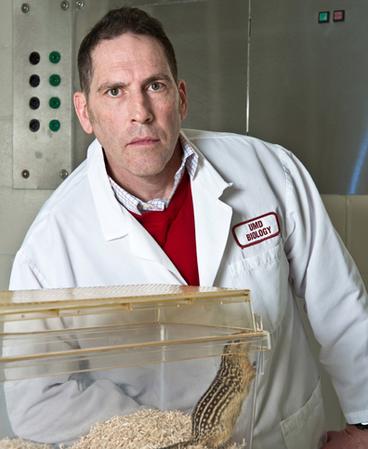Three UMD researchers, Professor Matt Andrews in the Department of Biology, Professor Marshall Hampton in the Department of Mathematics, and postdoctoral researcher Dr. Richard Melvin, have taken an unprecedented approach to learning more about brown adipose tissue, also know as brown fat. They studied Minnesota’s thirteen-lined ground squirrel and identified genes that cause brown adipose to generate heat by burning fat. This work is significant because it paves the way for pharmaceutical companies to create drugs to enhance fat burning in humans. “Brown adipose is nature’s fat burning machine,” said Andrews. “We know of no other organ or tissue, other than brown adipose in a hibernating mammal, that can expend as much energy as fast.”
UMD’s research, published on December 30, 2013 in the scientific journal PLoS One, describes how the team identified genes that are expressed in brown fat by determining the sequence of the initial products of gene expression called messenger RNA or mRNA. They used an approach called transcriptomics to identify and quantify the levels of over 15,000 distinct brown adipose mRNAs in active and hibernating ground squirrels. In the PLoS One paper they discuss how the selective expression of these genes can result in the massive fat-burning activity of brown adipose tissue.
Here’s How it Works.
Humans need fat. Our bodies use white adipose (white fat) to store excess calories for later use. However, too much white fat can result in weight gain. In 2007, researchers discovered that adult humans also have a tiny bit of brown fat, which burns calories incredibly fast. Babies are born with brown fat because in the past, they may have needed to burn fat to stay warm and survive.
The UMD research, led by Andrews, studied brown fat in the 13-lined ground squirrel, a hibernating mammal. During hibernation, ground squirrels lower their body temperature and do not eat. They use fat stored in white adipose as their primary source of fuel. When the squirrels awaken from their deep sleep, their body temperature rises from 42 to 98 degrees in less than three hours. In this time, a large amount of fat is burned in brown adipose, creating heat like a furnace, to raise the body temperature.
Andrews and Hampton studied the expression of genes responsible for this massive fat burning activity. They determined that over 2,000 brown fat genes change their expression during the hibernation season including genes involved in hormonal signaling and fat breakdown. Their next step was to use bioinformatics to determine if the ground squirrel genes correspond to human genes, and almost all of them do.
From Gene Study to Drug Therapy.
The work Andrews and his team have done in this new research field has implications for drug therapy. “Harnessing this information from naturally hibernating mammals will give researchers new pharmaceutical targets in the effort to design drugs,” said Andrews. “Our work may help find a therapy that will sway a white fat cell to use its own biochemical reactions to melt away fat.“
The drug therapy technology isn’t new. Over a decade ago, gene switching by RNA interference was identified. In 2013, the U.S. Food and Drug Administration announced its first approval of RNA interference strategy treatment. They approved an injectable disease therapy, mipomersen or Kynamro, which is a drug that helps lower a rare form of high cholesterol.
“If our research with the ground squirrel can lead to a therapy that accelerates fat burning, it has the potential to help people lose weight easier,” Andrews said.

